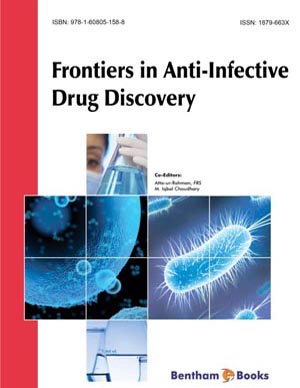Abstract
Microbial pathogens with resistance to conventional drugs are a problem of global proportions and in response, photodynamic antimicrobial chemotherapy (PACT) has been developed. PACT involves the delivery of a non-toxic photo-sensitiser (PS) to the site of a microbial infection, which is then taken up by the pathogen. Illumination of the PS by light at an appropriate wavelength can lead to inactivation of the pathogen through the production of highly reactive free radical species, which induce oxidative damage to microbial targets such as lipid, proteins and DNA. Here we briefly review light sources for PACT, the desirable electronic and physiochemical properties of PS, and the photochemical and photophysical steps underlying PS antimicrobial action. With reference to recent patents, we then illustrate uses of PACT agents, including: 5-aminolevulinic acid, phenothiazinium based compounds, psoralens and organorhodium complexes.
Keywords: Photodynamic antimicrobial chemotherapy, photodynamic therapy, photosensitiser, light, type I mechanism, type II mechanism, singlet oxygen, viruses, bacteria, protozoa, blood, aminolevulinic acid, phenothiazinium, psoralen, organorhodium






















